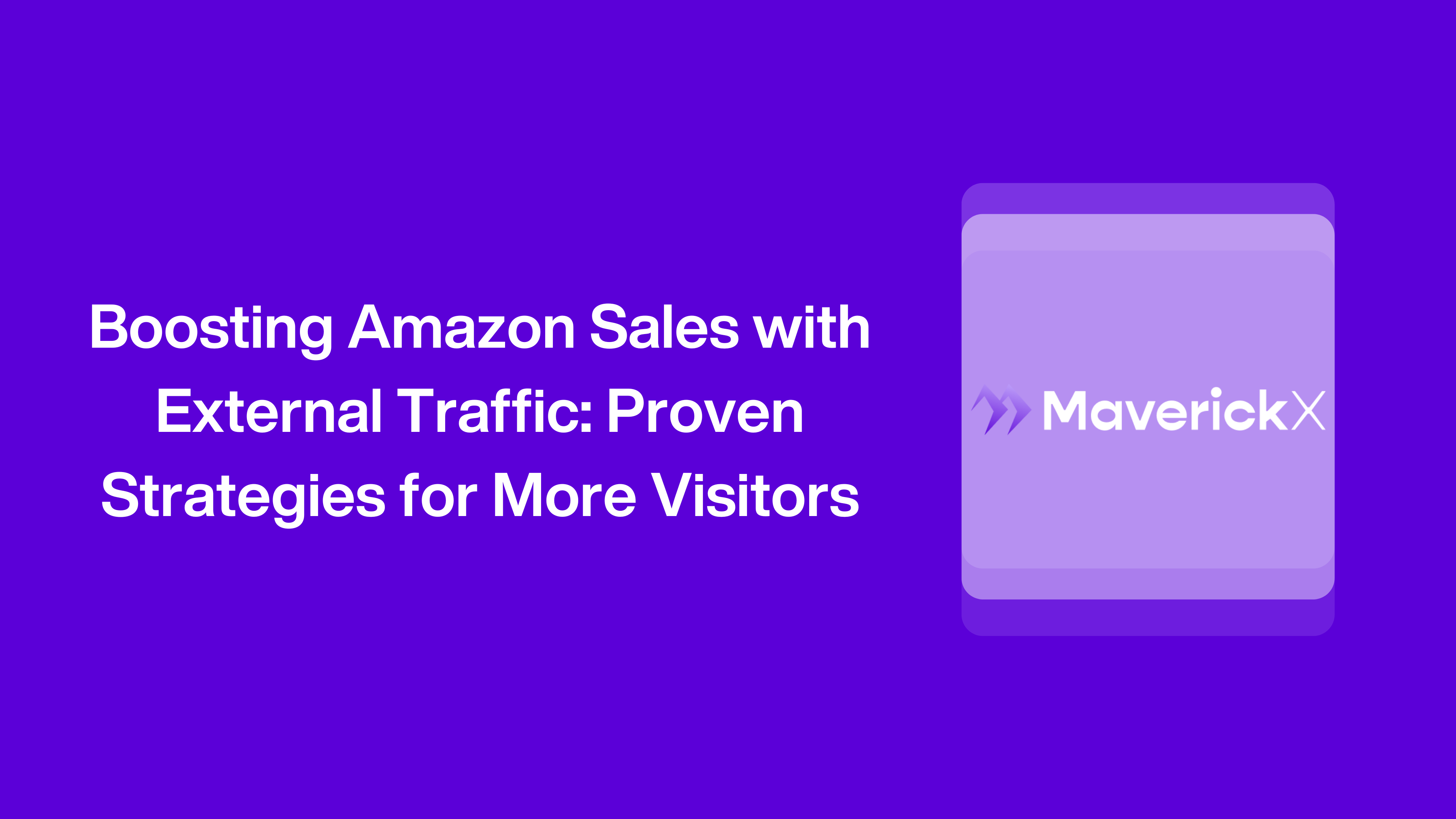
Article Contents
Relying solely on Amazon’s internal search and advertising system is no longer enough to maintain a competitive edge. With millions of sellers vying for customer attention, the rising cost of Amazon PPC, and limited organic reach, tapping into external traffic sources has become a necessity. By leveraging search engines, social media, and other digital channels, sellers can bring in new-to-brand customers, increase brand awareness, and create a sustainable sales funnel beyond Amazon’s ecosystem.
Amazon’s internal traffic is valuable, but it is also highly competitive and often expensive to dominate. The cost of Amazon PPC campaigns continues to rise, making it crucial for brands to diversify their advertising strategies. External traffic sources, such as Google Ads, Facebook Ads, and influencer marketing, allow sellers to target potential customers earlier in their buying journey. Instead of waiting for shoppers to find your listing on Amazon, external traffic initiatives actively direct high-intent consumers to your product pages, improving visibility and conversion rates.
A significant portion of online shopping journeys begin on search engines, not on Amazon. Studies show that more than half of shoppers use Google to research products before making a purchase. By strategically placing ads and optimizing content for search engines, brands can capture these shoppers and direct them to their Amazon listings. Google Ads, in particular, offer a powerful tool for targeting users who are already searching for products similar to yours, ensuring high relevance and conversion potential.
Social media platforms such as Facebook, Instagram, TikTok, and Pinterest provide additional opportunities to drive external traffic to Amazon listings. With engaging content, influencer collaborations, and targeted advertising, brands can introduce their products to new audiences and encourage direct traffic to Amazon. Leveraging platforms where consumers naturally discover and explore products increases the likelihood of converting passive viewers into paying customers.
Email marketing remains one of the most cost-effective and reliable ways to generate external traffic. By building an email list, brands can engage directly with potential and returning customers, offering exclusive deals, product recommendations, and updates that encourage them to purchase on Amazon. A well-structured email strategy allows businesses to nurture relationships and drive consistent traffic without the ongoing costs of paid advertising.
Collaborating with influencers and affiliate marketers is another effective way to boost external traffic. Content creators who align with your brand can introduce your products to their engaged audiences, providing authentic recommendations that drive interest and conversions. Amazon’s Affiliate Program further incentivizes content creators to promote products in exchange for commissions, making it a win-win strategy for both sellers and marketers.
Driving external traffic is only effective if properly tracked and optimized. Amazon Attribution provides sellers with insights into how external traffic sources impact conversions and sales performance. By analyzing data from campaigns on Google, Facebook, or other platforms, sellers can refine their strategies, allocate budgets more effectively, and maximize ROI. Continuous testing and optimization ensure that external traffic efforts yield sustainable long-term growth.
As competition on Amazon intensifies, sellers who invest in external traffic strategies will be better positioned for success. By diversifying traffic sources, brands can reduce reliance on Amazon’s internal ecosystem, build stronger brand recognition, and create a more resilient business model. Those who embrace this multi-channel approach will not only boost sales but also establish a long-term competitive advantage in the evolving eCommerce landscape.
To provide you with the best service, please fill out this form and provide as much detail as possible.